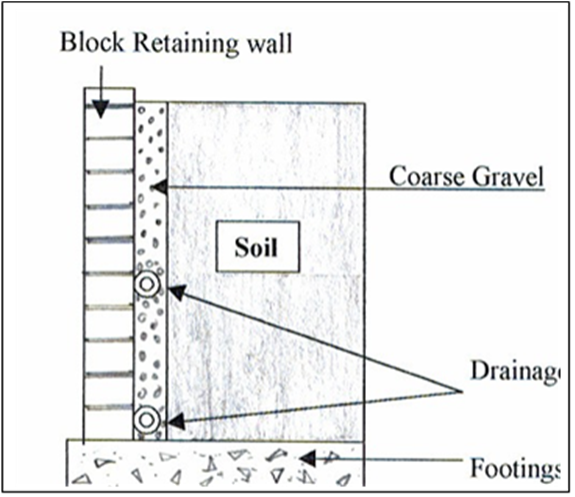Retaining Walls – A Coating Problem
At Rockcote we are frequently asked to recommend a system for “waterproofing” the outside face of retaining walls.
Most commonly these walls are concrete block construction, and all too often have insufficient footings or are incorrectly anchored.
The first thing that needs to be understood is that retaining walls are not intended to retain water and are not designed to cater for hydrostatic pressure.
Hydrostatic pressure exerts double the sideways pressure of an equivalent mass of soil and is a common cause of failure of retaining walls.

Another problem is that moisture causes volumetric changes in clay soils and the cycle of swelling when wet and shrinking when drying out is a major factor in the instability and movement of retaining walls (and other structures).
How this affects coating systems on the exterior of retaining walls is obvious. Hydrostatic pressure can move through and within the wall to “push off” exterior coatings. Cracks formed in the masonry through structural movement can rupture the coating and permit the ingress of water, adding to the hydrostatic pressure.
If this has been carried out, there is a good chance that an exterior coating system with a cement render base will be successful as a decorative coating. A good option would be to also coat the inside of the retaining wall with a proprietary “water-proofing” product.
Where no drainage measures have been taken and the wall has been simply backfilled with the soil it retains, it is probably too late, and no conventional coating system can be recommended with confidence.
Rising Dampness in Rendered Walls
Rising dampness has long been a problem in buildings. Particularly so in buildings with rendered walls, where the applied finish is pushed off the wall by rising dampness. Even after the affected areas have been repaired, damage will often occur in the same place or adjacent areas.
The problem of rising dampness within the wall itself must be addressed in the design and construction of the building. However, the problem is quite often in the render itself, even though correct procedures have been followed during the construction process. Usually, the problem occurs when the base of the rendered wall is subject to continual dampness, which rises up the wall through capillary action causing delamination of the applied coating. This problem can be solved using a water-repellent render such as Rockcote Quick Render.
These pre-blended cement renders are made water-repellent through the addition of special hydrophobic agents, which restrict the capillary action within the render, thus eliminating the possibility of rising dampness.